Russia has launched a military campaign inside Ukraine. This has been called an invasion by Western mainstream media (MSM), by the politicians loyal to the transatlantic alliance, and by the EU and NATO.
Currently it appears there have been clashes in Eastern Ukraine, around Kharkiv in the north and Odessa in the south. However, it isn’t clear that the fighting is anywhere near as extensive as is being reported by the Western MSM.
Russia has certainly targeted air bases and military infrastructure with air strikes. At this stage, Russia’s intentions appear to be reasonably straightforward. Russia has reiterated that it has no plans to occupy Ukraine.
Speaking on 24th February, President Vladimir Putin outlined the objectives of Russia’s so-called “special military operation:”
[W]ith NATO’s eastward expansion the situation for Russia has been becoming worse and more dangerous by the year. [. . .] Any further expansion of the North Atlantic alliance’s infrastructure or the ongoing efforts to gain a military foothold of the Ukrainian territory are unacceptable for us. [. . .] [T]he leading NATO countries are supporting the far-right nationalists and neo-Nazis in Ukraine, those who will never forgive the people of Crimea and Sevastopol for freely making a choice to reunite with Russia. They will undoubtedly try to bring war to Crimea just as they have done in Donbas. [. . . ] The purpose of this operation is to protect people who, for eight years now, have been facing humiliation and genocide perpetrated by the Kyiv regime. To this end, we will seek to demilitarise and denazify Ukraine, as well as bring to trial those who perpetrated numerous bloody crimes against civilians, including against citizens of the Russian Federation. It is not our plan to occupy the Ukrainian territory. We do not intend to impose anything on anyone by force.
From what little is known in the West, which has seen a remarkable lack of reporting from inside the country, as of 4th March Russian forces have seemingly engaged in operations in the DPR and LPR and in territory north of the Crimea. They are said to be close to surrounding the northern cities of Kharkiv and Kyiv and to have moved northwest from Odessa to secure territory along the border between the Odessa Oblast and Moldova.
This military action by Russia is part of a much larger geopolitical, economic and globalist picture. We will explore this background in detail in Part 2 – 4.
The conflict is rapidly evolving, and there is no way to accurately predict what will happen. The risks couldn’t be higher. By the time you read this, the situation on the ground may be radically different.
NATO’s rejection of Ukrainian calls to attempt to establish a no-fly zone has perhaps assuaged fears of the conflict spreading beyond Ukrainian borders in the immediate-to-short term. Vladimir Putin has stated that Russia would view this as an act of war. Jens Stoltenberg, Secretary General of NATO, said:
We are not part of this conflict, and we have a responsibility to ensure it does not escalate and spread beyond Ukraine because that would be even more devastating and more dangerous, with even more human suffering. [. . .] NATO is not seeking a war with Russia.
In this four-part series, we will first consider some of the modern historical influences in Ukraine leading up to the Russian attack. In Part 2 – 4 we will consider the wider implications within the context of both the geopolitical and globalist transformation of the international rules-based order (IRBO).
It is left to us to explore the evidence. The MSM in the West is a partner of Western governments and serves as nothing but their propaganda machine. The objectives of the MSM in the East are largely identical, although there is at least greater plurality of opinion allowed in Russia. From a Western perspective however, the Eastern MSM sells the official alternative narrative.
Necessarily, in trying to discern reality, we have to rely upon both the West-aligned and East-aligned MSM to some extent. Contrasting their depiction of events may be helpful as long as we understand that neither are trustworthy and that both should be read with critical thinking in mind.
Ukrainian Recent Modern History
Ukraine is an ancient land with a rich history. However, the boundaries of the nation state we recognise today first emerged with the Ukrainian Peoples Republic (1917-1920). Civil war with the West Ukrainian People’s Republic (Eastern Galicia) saw a brief period where the south eastern Ukraine broke away.
The anarchist free territory of Makhnovshchina (Makhnovia 1918-1921) was established. Defended by the Black Army of Nestor Makhno, in 1918 he wrote a public letter to the people and announced:
Together we will destroy the slave system in order to bring ourselves and our comrades onto the path of the new system. We organize it on the basis of a free society, the content of which will allow the entire population, not exploiting the labor of others, to build their entire social and social life in their own communities, completely freely and independently of the state and its officials
Liberation by the Black Army was liberation in the true sense of the word. When a town or city was won, they would post notices that read:
This army does not serve any political party, any power, any dictatorship. [. . .] It strives to protect the freedom of action, the free life of the workers, against all exploitation and domination. The Makhnovist Army does not, therefore, represent any authority. It will not subject anyone to any obligation whatsoever. Its role is confined to defending the freedom of the workers. The freedom of the peasants and the workers belong to themselves, and should not suffer any restriction.
The people of Makhnovia functioned perfectly well without any government, lived in relative peace and enjoyed a busy catallaxy. But the regional powers were utterly opposed to its existence, and the Bolshevik Red Army crushed it in 1921. With a government back in control, what followed was inevitable violence and destruction.
The Ukrainian Soviet Socialist Republic (UkrSSR) was formed in 1922. Due to the Soviets agricultural policies (collectivism) between 1931 and 1934, more than 5.5 million people starved to death in the Union of Soviet Socialist Republics (USSR, or Soviet Union). This entirely government-created famine was at its worst during 1932 and 1933, particularly in Ukraine, where an estimated 4 million people perished during the Holodomor.
In June 1941, the German Army opened up the eastern front of WWII with Operation Barbarossa. Its invasion of the USSR created suffering on an unimaginable scale. Losses of such magnitude are difficult to quantify, but Germany lost approximately 5.5 million troops and nearly 2 million civilians. Polish civilian losses were similar.
Throughout WWII, the Soviet Union lost 25–35 million soldiers and civilians—nearly 14% of its entire population. An estimated 4 million of them were in Ukraine. Every year, on the the 9th of May, Russian’s commemorate the end of the Great Patriotic War. For Russians this is WWII, the appalling conflict on the eastern front seared a deep antipathy for Nazis into Russian consciousness. Their defiance of National Socialism is a core component of Russian national identity.
In 1945 the UkrSSR became one of the founding members of the United Nations. In 1954, its territory expanded when then-USSR President Nikita Khrushchev ceded the Crimea to the UkrSSR.
The Crimea had become Russian territory in 1783, when the Ottoman Empire, having been decisively defeated by Russian Tsarist forces at the 1774 Battle of Kozludzha, lost the peninsula to Imperial Russia (1721–1917). In 1944, the Tartar, Armenian, Bulgarian and Greek populations had been forcibly deported from the Crimea by Stalin, who encouraged further Russian settlement there.
Up to 1945, the Crimea was an independent republic of the Russian Soviet Federative Socialist Republic (RSFSR). With the forced relocation of the Tartar population, the Crimea became an RSFSR oblast (region). By 1954, approximately 75% of the then-1.1 million people living in the Crimea were ethnic Russians and 25% Ukrainian.
In January 1991, in anticipation of the forthcoming Ukrainian independence referendum, approximately 93% of Crimean voters chose to retain Crimean independence. With an 80% turnout, this represented 74% of the electorate. This was subsequently recognised by the UkrSSR Rada, which, on the 12th February 1991, passed a law establishing Crimea as an autonymous republic within the borders of the Ukraine.
In December 1991 the national referendum declared Ukrainian sovereignty. The lowest turnout in any Ukrainian oblast was in Crimea. Of the 65% of the Crimean electorate who voted, just 54% of them opted for Ukranian independence. Thus, only 35% of Crimeans eligible to vote supported Ukrainian independence from the Russian Federation.
In March 1994, as political turmoil between the governments of Kyiv and Simferopol (the Crimean capital) became increasingly heated, another referendum again saw the people of Crimea overwhelmingly choose further independence from Kyiv and closer ties to Russia. Tensions between Kyiv and Simferopol rumbled on for the remainder of the 20th century and into the first two decades of the 21st.
The ethnic mix in Crimea has changed in recent decades. Many Tartars returned after the dissolution of the USSR. Today, approximately 68% are ethnic Russian, 16% are Ukrainians and 13% are Crimean Tartars. The remaining 3% are Belarusians, Armenians and Jews. The population has grown to an estimated 2.4 million.
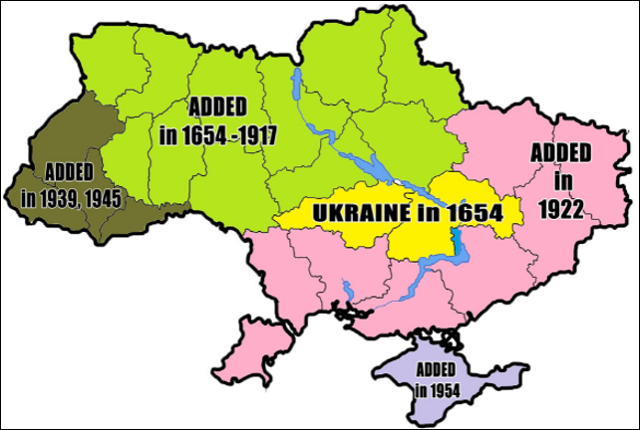 Map of Ukraine between 1654 and 2013
Map of Ukraine between 1654 and 2013
The Ukrainian Neo-Nazis
In 2010, then-Ukrainian President Viktor Yushchenko posthumously bestowed state honours on one of the WWII leaders of the Organization of Ukrainian Nationalists (OUN), Stepan Bandera. Yushchenko declared Bandera to be a “Hero of Ukraine.”
In 1922, the modern Ukrainian oblasts of Lviv , Zakarpattia, Irvano-Frankivst and Chernivtsi were part of the Second Polish Republic. Consequently, during the 1920s and ’30s, a Ukrainian nationalist movement emerged in eastern Poland. Its members formed the Ukrainian Military Organization (UVO), which waged a terrorist campaign in the region.
Between 1929 and 1934, the UVO gradually transitioned to become the foundation of the Organization of Ukrainian Nationalists (OUN). Following the outbreak of WWII, the OUN split into the OUN-M, under the leadership of Andriy Melnyk, and OUN-B under Stepan Bandera.
Stepan Bandera was a Nazi collaborator, ultra-nationalist and rabid anti-Semite. In 1941, working with the Nazi death squads (Einsatzgruppen), Bandera embarked on coordinating a series of pogroms, starting in the city of Lvov, where 4,000 Jews were massacred in a few horrific days. A death-threat pamphlet, authorised by Bandera prior to the slaughter, read, “We will lay your heads at Hitler’s feet.”
Bandera’s OUN-B hoped to create an ethnically pure Ukraine. Poles, Jews and the Russians were their targets for extinction.
The northern and particularly the western Ukrainian oblasts welcomed the Nazis as liberators from Soviet rule. Many ethnic Ukrainians joined the German “liberators.” Military units such as the 14th SS-Volunteer Division (Galician) and the Nachtigall and Roland Battalion were largely formed from followers of the OUN and UPA. (More on them shortly.)
An estimated 1 million Jewish Ukrainians, Ukrainian Russians and Poles were systematically murdered during the years of the Holocaust. On just two days in September 1941, at the Babi Yar ravine in Kyiv, approximately 34,000 Jewish men, women and children were put to death.
Though arrested by the Germans in July 1941, after declaring Ukrainian statehood and pledging to support the 4th Reich, Bandera continued to inspire his Banderite followers. The OUN-B formed the Ukrainian Insurgent Army (UPA). Between 1941 and 1945, the UPA systematically tortured and massacred an estimated 100,000 Poles in the western oblasts of modern-day Ukraine.
CIA documents released in 2007 reveal that after the war Bandera worked with British intelligence, running agents inside the UkrSSR. The relationship between the Western powers and the Ukrainian far right has continued ever since.
The CIA didn’t work directly with Bandera but instead worked with other members of the OUN and its splinter organisations. Eventually, while collaborating with West German intelligence (the BND), which was heavily infiltrated by the KGB (the foreign intelligence service of the USSR), Bandera was assassinated by the Soviets in 1959.
Following the USSR’s victory in Ukraine in 1944, the OUN continued to resist, most notably in the Eastern Galician oblasts of modern Ukraine. The OUN fought a guerilla war until the mid-1950s. Ironically, Bandera was neither the most prominent nor the most powerful of the OUN leaders. However, his assassination made him a martyr for Ukrainian nationalists and a symbol for their neo-Nazi ideology.
In 1991, Oleh Tyahnybok became one of the founding members of Svoboda, the Social-National Party of Ukraine (SNPU). He urged the Ukrainian ultranationalists (ultras) to rid the country of Jews and Russians. In 1998, there was sufficient popular support for Tyahnybok to be elected to the Ukranian parliament (the Verkhovna Rada), where he served as a member of the Peoples Movement of Ukraine faction. Following his 2002 re-election to the Rada, he became Svoboda leader in 2004.
Svobodo minor political success inspired other neo-Nazis such as Dmytro Yarosh, who co-founded Tryzub (Trident) in 1994, becoming its leader in 2005. In 2013, Yarosh became the assistant consultant to the deputy leader of the Rada opposition, Valentyn Nalyvaichenko. This coincided with Yarosh’s elevation to the leadership of the ultra-neo-Nazi Right Sector, with Tryzub at its core.
Nalyvaichenko had previously served in Washington from 2001 to 2005, first as consul advisor, then as director of the consular service in the Ukrainian embassy. He was the head of the Security Service of Ukraine (SBU) between 2006 and 2010 and was appointed to that position again in 2014.
The other SNPU founder was Andriy Parubiy. The SNPU became Svoboda in 2004 and Parubiy, who was leader of its paramilitary wing, called Patriot of Ukraine, between 1998 and 2004, publicly transitioned from militancy to politics.
Parubiy’s political career included his 2014 appointment to Secretary of the National Security and Defense Council of Ukraine and his 2016 election to the position of chairman (speaker) of the Rada.
When Viktor Yushchenko officially recognised Bandera as a hero, many members of the EU were outraged. It was Parubiy who appealed to them to support Yushchenko’s decision.
Perhaps, in conferring that honour upon Bandera, Yushchenko was calculating his potential future political prospects. The neo-Nazis were a minor but disproportionately powerful force in Ukrainian politics. This was acknowledged by the comments of Bandera’s namesake and grandson who, on hearing the news of his grandfather’s deification, reportedly said:
[T]he president acted wisely, he could have done it earlier, but that would have been perceived as an attempt to win votes.
This in no way suggests that the majority of Ukrainians or their government are fascists. Despite some limited electoral successes, the Ukrainian far right remains on the fringes of Ukrainian politics.
Ukrainian electoral history shows that traditional socialism—democratic socialism rather than national socialism—is the dominant political ideology. Nonetheless, it would be disingenuous to pretend that Ukrainian ultra-nationalism doesn’t have notable popular support, especially in the western oblasts.
The neo-Nazis’ political influence in Ukraine exceeds their electoral reach only because of the significant support they receive from the NATO-aligned Western hegemony. Ukraine, as it stands today, became a truly independent sovereign nation for the first time in 1991, following the dissolution of the Soviet Union. Ethnically, linguistically, politically and culturally it is a country of two halves.
The predominantly Russian-speaking populations in the southern and eastern oblasts have consistently voted for socialists or communist candidates and have staunchly advocated maintaining a close relationship with Russia. On the grand chessboard of geopolitics, both sides of Ukraine, east and west, have been exploited by the foreign great powers.
Russia’s current military action in the Ukraine is born out of that international political struggle. Make no mistake: The Western MSM and its political class are wholly complicit in precipitating the crisis.
In Part 4 we will explore this subject in depth. First, though, we must look to the circumstances leading up to and surrounding the civil unrest of the 2013–2014 Euromaidan coup, the alleged annexation of Crimea and the setting for the subsequent war in the Donbas.
The Euromaiden Coup
Ukraine presidential elections in 2004 saw the West-backed Viktor Yushchenko vie for head of state against Russia-backed Victor Yanukovich. The election was extremely close, illustrating the deep division in Ukrainian society. Yanukovich was initially announced the winner by a narrow margin.
However, amidst widespread and credible allegation of electoral fraud, Yushchenko supporters wouldn’t accept the result. On the 22nd November 2004, they began to amass in the central Maidan square in Kyiv, waving orange banners (hence the name “Orange Revolution”) and demanding a rerun of the election.
The entirely peaceful protesters maintained their vigil for a month, electoral reforms were made and a rerun saw Yushchenko duly elected. But he failed to make the promised economic reforms. Consequently, Ukrainians elected Yanukovich in 2010. Despite a protest to the Supreme Administrative Court by his opponent Yulia Tymoshenko, Yanukovich took office.
The 2010 presidential election was deemed to be free and fair by international observers. The parliamentary elections in 2012 consolidated the political authority of Yanukovich’s Party of Regions; that party increased its seats to 185. And, as is indicative of the ongoing divisions in Ukrainian society, the 2012 election also saw Svoboda, under Tyahnybok, increase its seats to 37, making it the fourth-largest party in the Rada.
During this period of political change, preceding and up to the Euromaiden coup of 2013/14, Yanukovich was the democratically elected leader of the Ukraine. This is a crucial fact to remember as we move on to discuss the subsequent events that have, in part, led to the current Russian military action.
Following the 2012 elections, the Yanukovich government approved the draft of the European Union–Ukraine Association Agreement. In response to that agreement, Russia heaped pressure on the Ukrainian government, warning of a breach of a still-existing agreement signed in 1997. Given that Russia is Ukraine’s largest creditor and trade partner, Yanukovich wavered on signing the trade element of the EU deal. That element was called the Deep and Comprehensive Free Trade Area (DCFTA).
The Ukrainians had reason to question the EU’s proffered DCFTA deal. Their existing main trade agreements were with the Commonwealth of Independent States (CIS), and it wasn’t clear how they would be compensated by the EU for the loss of this trade. Concerned about a potential dramatic fall in industrial productivity, Deputy Prime Minister Yuriy Boiko announced a halt to negotiations until the issue could be clarified with the EU.
Caught between the economic and financial might of the EU and Russia and with rising unrest at home, Yanukovitch tried to negotiate a package of debt restructuring. With Russian approval, he offered a tri-party agreement between the EU, Ukraine and Russia. The EU declined the deal and the IMF refused to restructure Ukraine’s debt obligations.
Numerous statements from Party of Regions representatives, including Yanokovich and Boika, insisted that the deal was not dead, that negotiations were ongoing and that they intended to sign the deal. However, Reuters and many other Western media outlets completely ignored EU and IMF intransigence and instead cast Yanukovich as the villain, claiming he had “vetoed” EU attempts to save the deal. In reality, as later admitted by the MSM, it was the EU who had shut the door.
In November 2013, pro-EU demonstrations started to build in Independence (Maidan) Square in Kyiv. Initially the protests were peaceful, as they had been in 2004 during the colour revolution known as the Orange Revolution.
The Western MSM then threw their weight behind the protests and were joined in their reporting on Maidan by a newly created gaggle of Ukrainian media outlets. Between 21st and 24th November, three of them—Espreso.tv, Spilno.tv and hromadske.tv— took to the airwaves, instantly becoming an online phenomenon among Ukrainian audiences.
Day after day, all these segments of the media continued to stoke resentment towards Ukraine’s democratically elected government and towards Yanukovich in particular. For instance, they claimed the world was witnessing “the birth of a nation” instead of a coup.
As a result, the protests gathered in numbers and in strength. Though hostility towards Yanukovich was increasing, the protests remained overwhelmingly peaceful.
The peace was shattered on 30th November, when special riot police (the Berkut) were accused by the Western MSM and the Ukrainian pro-EU media of attacking the protestors. The pro-EU/NATO MSM were present in their droves in the early morning hours (03:00hrs) to film and report on the event. Their arrival in such numbers at such an unsocial hour was highly unusual.
Unsurprisingly, though, none of them accurately reported what happened. Instead, they created a single cohesive—and false—narrative, blaming Yanukovitch and the Ukrainian government for the violence. Western governments, especially those who are members of the NATO-driven Five Eyes intelligence alliance and the EU, knew this version of events was a lie, yet they sided with it then—and maintain the propaganda to this day.
While it is true that elements within the Ukrainian government colluded with Svoboda and the Right Sector to cause the violence, Yanukovich and the leadership of the Party of Regions were not controlling them. Rather, these far-right elements were acting autonomously with the support of Western governments, notably the Neocon hawks in the US and other globalists (see Part 3).
Video footage shows that the Right Sector and other ultras, armed with batons and projectiles, were already in position when the Berkut arrived. They attacked the riot police, who responded by beating all protestors. This was admitted by Ihor Mazur, a Ukrainian National Assembly–Ukrainian People’s Self-Defence (UNA-UNSO) combat commander, who said the Right Sector started the confrontation before retreating.
Ever since that violent episode, Putin’s comments on “denazifying” Ukraine have been ridiculed by the Western MSM. The political establishment of the West has piled on. In an emotional statement on US TV, Michael McFaul, former U.S. ambassador to Russia, said “there are no Nazis in Ukraine.”
Arseniy Yatsenyuk, who later became Ukrainian Prime Minister (2014–2016), was among the leaders of the Maidan who had advance knowledge of the planned Berkut dispersal of the protesters. Others in on the plans included Andriy Parubiy, who, according to witness testimony, was overheard discussing the Berkut action before it occurred. Yet neither he nor Yatsenyuk nor any of the other Maidan leaders, including Oleh Tyahnybok, warned the protestors. They were content to watch the ensuing violence without correcting the false reports.
In the days and weeks that followed, the violence escalated as the protestors, wrongly believing the Berkut had started the bloodshed, gathered in increasing numbers. On 1st December they erected barricades to block access to government buildings, occupied Kyiv city hall and clashed with the Berkut on a number of occasions. Video analysis clearly shows that Right Sector agitators were again instrumental in the violence.
On the 2nd December Oleh Tyahnybok openly called for revolution:
I congratulate all of those who are fighting for our cause, for the idea, themselves and their children. We have our first victories, and that is precisely because we have started these protests all over Ukraine. This is a real pressure on the criminal regime, which has crossed all lines and must go away! [. . .] We all here would like to appeal to all military officers, generals, soldiers and law enforcers [. . .]: choose our side, do not follow criminal orders and join the Ukrainian revolution.
The Right Sector was clearly gearing up for significant violence. Speaking in January 2014, a Right Sector coordinator, Andrei Tarasenko, referring to the Berkut, reportedly said:
If they attack and try to carry out a bloody crackdown, I think there will be a massacre. [. . .] Guerilla warfare will begin in Ukraine.
The sporadic violence continued throughout January and into February. Moves and countermoves progressed until, on the 16th February, the protesters abandoned their occupation of Kyiv city hall in exchange for government guarantees to release all arrested protestors and to provide amnesty from prosecution to all other demonstrators.
On the 19th February the Yanukovich government and the protestors declared a truce. With the death toll among police and protesters already standing at 26, the Yanukovich government and all opposition parties, including Svoboda, seemingly supported the truce. Yanukovich again offered the role of interim Prime Minister to Arseniy Yatsenyuk.
The response from the US administration was accusatory. President Barrack Obama said:
We’re going to be watching closely. [. . .] We hold the Ukrainian government primarily responsible.
The truce lasted a matter of hours before a horrific explosion of violence. Approximately 60 people, both police and protestors, were massacred by snipers positioned around Maidan square. The BBC, along with nearly every other Western MSM outlet, announced without any investigation supporting them:
At least 21 protesters have been killed by security forces in Kyiv. [. . .] The White House said it was “outraged by the images of Ukrainian security forces firing automatic weapons on their own people.”
Other than accurately quoting the White House, all of the media’s reporting on the incident was disinformation. There was no basis for the allegation that the Ukrainian security services had opened fire on the protesters. The BBC was part of a united Western media front that was deliberately misleading readers and audiences. Even on the five-year anniversary of the event, the MSM were still peddling the myth rather than the reality.
In response to the slaughter on the 21st February 2014, the EU and Russia brokered an agreement to settle the political crisis in the Ukraine. The plan was to establish a National Unity government in the next ten days, pending new presidential elections by the end of the year, with a full investigation into the shootings to commence as soon as possible. Also agreed to were constitutional reform and a rebalancing of the power-sharing between the presidential office and parliament.
The leader of the Right Sector, Dmytro Yarosh, rejected the deal and threatened to seize parliament and the presidential palace by force. Yarosh said:
We have to state the obvious fact that the criminal regime had not yet realized [. . .] the gravity of its evil doing.
He added:
The Right Sector announces an action to force regime guards to peace.
The duplicity of this statement would soon become apparent. Yarosh may have been concerned that the far right would return to the fringes of Ukrainian politics if the deal stood. A poll in early February suggested that a majority of Ukrainians were opposed to the Maidan protests.
The next day, as security forces withdrew from Maidan square, the protesters, led by Parubiy and Yarosh, among others, seized the Verkhovna Rada and the presidential offices. Yanukovich fled to the eastern city of Kharkiv, from where he gave a televised address vowing to hold on to the presidency.
Arseniy Yatsenyuk was immediately sworn in as the interim prime minister. When the Party of Regions distanced itself from Yanikovich and a warrant was issued for his arrest, Yanukovich escaped over the border to Russia with Russian assistance.
The events that transpired between November 2013 and February 2014 undoubtedly constituted a coup d’etat. This is not to suggest that there was anything inherently undemocratic about the protests. However, the nature of those protests was twisted by the actions of a Western-backed Ukrainian far right.
Ironically, the legal right to peacefully protest is rapidly being eroded in the West. Recent events in Canada show that Western governments have no real commitment to democracy. Their public veneration of democracy is simply a banner of convenience. Across the Western world, the rights that underpin democratic society are simply being cast aside and in their place dictatorships installed.
Article 108 of the Ukrainian Constitution (the 1996 and 2004 versions do not differ in this respect) is clear with regard to how a president can be removed. Article 111 outlines the impeachment process.
Under the Ukrainian Constitution, a sitting president can be removed only for treason or for some other crime. Yet, in its decision to remove Yanukovich, the Maidan faction in the Rada said the reason was because Yanukovich was “unable to carry out his duties.” This was constitutional nonsense.
However, regardless of the given reason, 338 of the 450 Rada delegates are required for impeachment. The Maidan contingent achieved only 328 votes, falling 10 short of the constitutional requirement. Thus, the new Maidan government started its rule by ignoring the Ukrainian Constitution.
Yanukovich was the democratically elected president. He was ousted from power by force. The protestors did not represent the views of the entire Ukrainian population. Opposition to the coup in the southern and eastern oblasts was significant.
That being said, the vast majority of Maidan protesters were not far-right thugs but ordinary people who believed that EU membership would improve their living standards and life opportunities. The protesters’ opposition to the government was genuine. It was not a fascist coup, as some have suggested.
Equally, though, there were elements within the protest movement who were neo-Nazis. They exploited the situation for their own essentially racist, political and military ambitions. In Part 3, we will consider the international network that supported them then and that continues to support them to this day.
The Role of The Far Right In the Euromaidan Coup
A University of Ottawa case study analysed reports and video footage of the events. The study revealed the role of the Western-backed Sovboda and Right Sector activists in both fomenting the violence and in the shootings. It also strongly suggested there had been considerable collusion by some units within the Ukrainian security services, by the subsequent Maidan government and by the judiciary:
The analysis showed that all major far-right organizations in Ukraine, participated in the Euromaidan. Their common goal was more or less a national revolution which would overthrow the pro-Russian Yanukovych government and forge the Ukrainian nation. [. . .] [V]ideos and livestreams of protests often showed that there are large numbers of Svoboda flags representing a significant proportion of the flags in many protest actions. [. . .] [T]he role of the far right in violent attacks and other cases of political violence during the Euromaidan was much more significant than their numerical presence among protesters.
Svoboda, as a political movement, distanced itself from the violence, but video evidence clearly shows that activists under its banner were often the instigators. The BBC interviewed members of the Svoboda-affiliated C14, a neo-Nazi youth movement. Conducted in March 2014, it revealed the ideology of its members. A young C14 activist said:
National Socialist themes are popular among some of us. The idea of one nation. [. . .] I want there to be one nation, one people, one country. A clean country, not like under Hitler, but in our way, a little bit like that. Those who like Russia, let them move to Russia. Ukraine will be just for Ukrainians.
Tough C14 members are eager to publicly maintain a distinction between themselves and the Nazis, their leader, Yevhen Karas, clearly espouses the fascist rhetoric that most of the world loathes. Referring to Russia, but also to the EU, he said that the objective of the movement was to “totally ruin the chains that connect our country to the imperial power from the past.” Denying that he was a Nazi and describing himself as a Ukrainian nationalist, Karas added:
Some ethnic groups have control [of] many business structures, some economic, some political forces. [. . .] Russians and Jews and Poles.
The Right Sector and Svoboda used false flag killings to enrage the wider protest movements in Ukraine. The first three Maidan protestors killed were murdered on January 22nd. Their deaths were blamed upon the Berkut, but court papers show that the initial, local investigations suggested they were killed by members of UNA-UNSO.
The larger, official government investigation would go on to maintain allegations of Berkut responsibility. However, on 24th February 2014, Svoboda member Oleh Makhnitskyi was appointed as Prosecutor General, and it was he who led the initial “investigation” into the Maidan square violence.
On the day of the massacre, the protestors, the Berkut and other Ukrainian security forces were facing each other in the streets. Therefore, the official story, parroted by the Western MSM, alleges that the protestors and Berkut officers were shot on a horizontal trajectory in an exchange of fire.
The 3D modelling supporting this conclusion was provided to the Ukrainian court by SITU, a New York-based firm that undertakes investigations based upon architectural analysis. The firm says of itself:
Our practice is purposefully collaborative, engaging in work with NGOs, universities, think tanks and individuals
SITU is funded by tax-exempt philanthropic foundations and the EU. These foundations and government agencies, alongside NGOs and other key individuals within foreign governments, have been extremely influential in both the Euromaidan coup and the Donbas War that followed. SITU provided an apparently fictitious 3D model, the purpose of which was to promote a fake official narrative.
Forensic evidence and witness testimony presented at the subsequent trial showed that the slain were shot either from the side or from an elevated position in territory held by the Maidan. Bullet holes revealed that the Hotel Ukraine received heavy fire from the Berkut and from the Omega unit of the internal security services.
They were shooting over the protesters heads towards the hotel and other elevated positions. This matches forensic analysis and shows that the Hotel Ukraine, the Bank Arkada, the Conservatory Building and other locations in Maidan hands provided the firing position for the snipers who carried out the massacre.
The deceptive Western MSM were effectively covering up for mass murderers. For example, in one BBC Newsnight report, a paramedic was quoted as saying that there were six dead people who had been shot by snipers. In fact, the parademic was pointing towards the Bank Arkada and warning of snipers on the roof.
It is fair to say that the Maidan trial judges and leading investigators had little interest in finding the truth. The Ottawa University report describes some of the apparently unfathomable decisions they made:
In January 2015, a forensic ballistic examination conducted upon the request of prosecution concluded that bullets extracted from killed protesters did not match the bullet samples from any Kalashnikov assault rifle which members of the Berkut special police force were then armed. The findings of this computer-based ballistic examination and results of the other 40 ballistic examinations were reversed in a couple of ballistic examinations conducted manually in the very end of the investigation. Such unexplained reversals which contradicted other evidence, such as testimonies of wounded protesters and results of forensic medical examinations, suggested that the findings of the new examinations of bullets were unreliable and likely falsified.
This falsification of evidence was perpetrated to cover up the fact that the Right Sector and aligned groups carried out a false flag operation to deliberately wreak havoc and blame their political opponents. They murdered both protesters, including some of their own, and Berkut officers in order to seize disproportionate political and military power in the aftermath. Their leaders would then go on to cast themselves as heroes of the Revolution of Dignity: an obscene oxymoron.
Andriy Parubiy, the overall commander of the Maidan Self-Defence companies, and Dmytro Yarosh, in command of the Right Sector company, were among the Maidan leadership who guided the movements of otherwise peaceful protesters into the kill zone. Maidan Self-Defence company commanders testified that Parubiy had ordered them to start “a bloodshed” during the “peaceful march” of 18th February 2014. Parubiy and Yarosh established the military council of the Maidan Self-Defence and Right Sector on 21st February, the day after the worst of the killings in Kyiv.
Ivan Bubenchyk admitted in two separate TV interviews in 2014 and 2016 that he had shot Berkut officers from the Conservatory. These statements identified him as belonging to the special Maidan company—under the command of Volodymyr Parasiuk—whose members had taken up positions in the building.
With regard to the primary location of the sniper positions, the Ottawa study notes:
Svoboda stated that its activists took the Hotel Ukraine under their control and guard on January 25, 2014. [. . .] Numerous videos showed that inside the hotel remained under control of the protesters. [. . .] This is consistent with the hotel CCTV recordings and statements of the Maidan Self-Defence unit commander and hotel staff saying that the police never entered the hotel [. . .] Videos also showed that a Svoboda deputy and the Maidan protesters guarded the Hotel Ukraine before, during, and after groups of covert shooters killing protesters from this hotel.
The evidence clearly shows that the snipers, under the control of the Svoboda, the Right Sector and its affiliate organisations were responsible for the slaughter. Much of this evidence emerged in the trial but it failed to reach any conclusion as it petered out in a sorry mess of claim and counter-claim. Eventually five former Berkut officers were allegedly exchanged in a prisoner swap deal with Russia.
This lent some fuel to an alternative theory of a “third force” of Russian-backed insurgents shooting the protesters. This notion had been pushed repeatedly by a close associate of Yarosh, Valentyn Nalyvaichenko, who was twice head of the SBU.
There is little-to-no evidence supporting this theory, which stands in stark contrast to the wealth of evidence pointing toward far-right culpability. Such an operation would have made little sense from a Russian perspective, whose interests were not served by the fall of the Yanukovich government.
The most likely explanation was summed up in the Canadian research paper:
[. . .] Various evidence has indicated a cover-up of the far-right-linked Maidan “snipers” and falsification of the official investigation of the Maidan massacre. [. . .] the lack of any investigations [. . .] fits the pattern of the cover-up and falsification of the Maidan massacre investigation from the top of the Ukrainian government. [. . .] The far-right organizations activists did not have significant positions in the national governments and the law enforcement agencies of Ukraine prior to the Euromaidan. Several of them after the Euromaidan occupied senior government positions. This is another indirect evidence of the involvement of the far-right organizations in the violent overthrow of the Yanukovych government in alliance with elements of oligarchic parties. Svoboda had four ministers from the first post-Yanukovych government and a member of Svoboda was appointed the Prosecutor General, and his office investigated the Maidan massacre.
The Annexation of the Crimea
While the protests in Kyiv had some popular support from northern and western Ukrainian oblasts, once again the nation was split along political, linguistic and ethnic lines. The southern and eastern oblasts were largely, though not entirely, opposed to the Euromaidan.
After the Euromaidan coup, the Russian-speaking residents of the Donbas (Donetsk and Luhansk oblasts), the Russian speakers in the Odessa oblast and the largely ethnic Russian Republic of Crimea stepped up their anti-Maidan protests. Their primary concern was to prevent the far-right elements within the Ukrainian government and military from attacking them. They had clear historical reason to fear the neo-Nazis.
Russia had strategic interests in these oblasts—a subject we will explore in Part 2. However, in late February 2014 clashes between pro-Russian and pro-Kyiv protesters outside of the Crimean Rada in Simferopol became increasingly violent. The pro-Russian contingent was openly calling for Russia to intervene militarily. Simultaneously, Russia mobilised troops on its southwestern border.
Just as the Maidan protests were infiltrated by members of the far right who were used as agent-provocateurs and false flag terrorists, so the anti-Maidan protestors were almost certainly infiltrated and supported by Russian agents who were brought in to agitate the situation. We know, for instance, that the Russian naval base in Sevastopol had a significant Federal Security Bureau (FSB) presence attached to it.
In 2009, in response to demands made by Valentyn Nalyvaichenko during his first stint as head of the SBU that all Russian agents leave Crimea, Russian Foreign Ministry spokesman Andrey Nesterenko said:
All subdivisions and services of the Black Sea Fleet are staying in Ukraine
The use of neo-Nazis in the Euromaidan protests does not imply that the majority of protesters were either fascists or agents of foreign powers. Nor does the undoubted presence of Russian agents in the anti-Maidan movement mean that their protests were illegitimate or didn’t have popular support.
If we simply accept the simplistic narrative of goodies and baddies foisted upon us by a moribund MSM, we will never understand the global forces that have led to the current military action in Ukraine. Nor will we appreciate its wider implications.
From January 2014, militia groups calling themselves the Crimean Self-Defence Force (SDF) started to emerge from the youth wing of the Russia Unity Party, led by Sergey Aksyonov. Undoubtedly Russian-backed, men wearing plain green uniforms with no insignia seized the Rada of the Crimea on the 27th February. The same day, the newly appointed prime minister of Crimea, Sergei Akasyenov, made a public statement asking for Russian assistance:
Understanding my responsibility for the life and security of citizens, I appeal to the president of Russia Vladimir Putin for assistance in guaranteeing peace and calmness on the territory of the autonomous republic of Crimea.
The lack of any identification on the Russian troops who worked alongside local pro-Russian militias caused considerable confusion for the Western media. But it was pretty obvious they were Russian. They carried Russian standard military equipment and weaponry and they fanned out from Sevastopol in Russian-registered vehicles.
There was no invasion of Crimea as such. Under the terms of the 2010 Kharkiv Pact between Ukraine and Russia, which permited the Sevastopol Naval base until 2042, Russia could maintain 25,000 troops on the peninsula. At the time of the operation, only 16,000 were deployed.
However, in leaving the confines of the base, they effectively breeched the agreement. Putin finally admitted that Russian troops were involved in April 2014. During the operation they seized key targets, such as the airport and border crossings, without shooting anyone.
In total, there were six deaths during the alleged “annexation.” Two pro-Russian protesters and one pro-Ukrainian protester died in violent clashes between the groups, and two Russian soldiers and one member of the SDF were allegedly killed by Ukrainian forces and in a separate operation to break up a suspected terrorist cell.
The Russians’ military task was made easier by the fact that they were welcomed by the Crimean majority. Appointed Knight Commanders of the Order of St George and St Michael are among those who allege the referendum was held at gun point.
Quite why Russia would have thought it necessary to do this, given that the people of Crimea had repeatedly and consistently attempted to maintain closer ties, if not reunification, with Russia, is a mystery. Only a select few and those who believe in Western MSM fairy tales can fathom it.
The entire Western political establishment and its MSM claim, ad nauseam, that Russia “annexed” the Crimea. They insist that Russia breached international law in doing so. This is a gross misrepresentation of international law and a deliberate deception. It is, in a word, disinformation.
Under International Law, “annexation” can be described as:
The acquisition of legal sovereignty by one state over the territory of another, usually by occupation or conquest. Annexation is now generally considered illegal in international law, even when it results from a legitimate use of force (e.g. in self‐defence). It may subsequently become legal, however, by means of recognition by other states.
Crimea was an independent republic with its own government, whose leaders called for Russian protection in the face of a neo-Nazis threat that, as we shall see, definitely constituted a danger to the population. At no point did Russia acquire any sovereignty by anything other than the lawful, democratic will of the people of the Crimea.
On the 10th March the Crimean parliament sent invitations to the Organization for Security and Co-operation in Europe (OSCE) to observe the vote. Swiss Foreign Minister Didier Burkhalter stated that the OSCE declined and claimed that the referendum was unconstitutional.
The United Nations, which has become little more than an extension of the West’s International Rules-Based Order, also claimed that the referendum was unconstitutional. Yet the Euromaidan coup, which was violent, largely orchestrated by Western-backed neo-Nazis and genuinely unconstitutional, is apparently, in the UN’s eyes, a shining example of democracy. The UN’s position is both partisan and absurd.
On 16th March, a little more than two weeks after securing Crimea from fascist attacks, another referendum was held. Once again, the people voted for reunification with Russia. Based upon the 83% turnout, the 97% vote for reunification meant that more than 80% of the Ukrainian population, necessarily including many Ukrainians and Tartars, elected to rejoin the Russian Federation.
A team of 135 international observers from 23 different countries, counting members of the European parliament among them, found the referendum to be free and fair. The UN’s protected opinion is nonbinding. With this international recognition, Crimea is now a lawful republic of the Russian Federation. Or at least it would be if International Law actually meant anything beyond might is right.
On 21st March, the Russian Federal Assembly ratifed the reunification treaty with the Republic of Crimea, making it de facto a republic of the Russian Federation. The republic was subsequently recognised by Afghanistan, Bolivia, North Korea, Cuba, Kyrgyzstan, Nicaragua, Syria, Sudan and Zimbabwe. There was no unlawful annexation by Russia. Every claim that there was is entirely false.
Reason To Be Fearful
Outside of Crimea, Russian protection in Ukraine was patchy. When the Right Sector tried to attack a pro-Russian presidential candidate in a hotel in Odessa, Russian special forces escorted him to safety. Sadly, other pro-Russians who were attacked by the far right were less fortunate. This was just one of many such attacks as Maidan politicians in Kyiv, Andriy Parubiy among them, sought to suppress the growing anti-Maidan protests in the Donbas and Odessa.
On May 2nd 2014 the Maidan government in Kyiv ordered that local oblast legislatures retake government buildings occupied by anti-Maidan protestors. In response, the legislatures were each permitted to pay for militias of up to 200 men, many of whom were sent from other oblasts. These militias were dominated by the Right Sector but also included local criminal gangs seeking to exploit the chaos.
In the city of Odessa, anti-Maidan protesters had constructed a command centre encampment on Kulikovo Field near the Trade Unions Building. Under the command of Parubiy, the National Security and Defence Council in Kyiv organised the deployment of Right Sector activists into the local Maidan militias under the guise of attending a football match.
On May 2nd 2014 the streets of Odessa saw pitched battles between the anti-Maidan and pro-Maidan activists and militias. The violence was escalating and the security forces were, at best, unable to cope. Some of them appeared to be collaborating with the Right Sector. Overwhelmed, many of the anti-Maidan protesters sought refuge in the Trade Unions Building.
Video footage analysis unequivocally shows that the massacre that ensued was again led by Parubiy’s Right Sector. An estimated 40 people were either burned alive, died of smoke inhalation or jumped to their deaths from the building. The Right Sector torched the building (go to 01:15:46) while knowing that anti-Maidan activists were trapped inside.
Witness testimony records other murders committed in and around the building. The beating-to-death of those who briefly survived the plunge from the inferno were accompanied with cries of “Colorado Beetle,” an epithet used by the Right Sector to suggest the victims were subhuman and should be crushed underfoot.
A practically identical slaughter was carried out in Mariupol just a few days later. News of it was met with gloating jubilation in Kyiv.
Parubiy visited Odessa, where he met with local militia checkpoints and handed out equipment—including a film of a meeting he had with Nikolai Volkov from the Right Sector. Parubiy was known to distribute bulletproof vests. Volkov was later filmed shooting at the Trade Unions Building while wearing one such vest. He was clearly among the leaders of the attack. His role has been confirmed through both video footage and witness testimony.
Andriy Parubiy is a common link between the Maidan, Odessa and Mariupol massacres. Parubiy’s Maidan Self-Defence companies were quickly incorporated into the Asov Battalion (regiments) of the Ukrainian National Guard and other “specialist” Ukrainian military units. They would go on to play a major role in the eight-year-long war in the Donbas.
The people of the Crimea not only had a painful history, punctuated by Nazi attrocities against them, they also had reason to fear that the Right Sector neo-Nazis represented a clear and present danger to their lives. To many of us in the West, the words “fascist” or “Nazi” are used so frequently that they have practically lost their meaning. Would that it were the same for citizens of Ukraine and Crimea.
The Right Sector and the paramilitary arm of Svoboda are not merely conservatives or people with whom the Western liberal intelligentsia disagree. They are full-blown neo-Nazis whose beliefs are driven by hate and by an unshakeable supremacist ideology. They have received and continue to receive the unwavering support of NATO-aligned governments. In turn, these governments serve a globalist network of public-private partnerships.
It is this wider geopolitical context that we will explore in Part 2. Without this analysis, we cannot appreciate forces that have led to the Russian “special military operations” in the Ukraine. One thing is certain: if we unquestioningly believe either the Western or Eastern MSM, we will never grasp the bigger picture.
************************************
“In allowing all political parties and organisations full and complete freedom to propagate their ideas, the Makhnovist Insurgent Army wishes to inform all the parties that any attempt to prepare, organise and impose a political authority on the working masses will not be permitted by the revolutionary insurgents, such an act having nothing in common with freedom of ideas.”
[ Revolutionary Military Council of the Makhnovist Insurgent Black Army – November 1919 ]


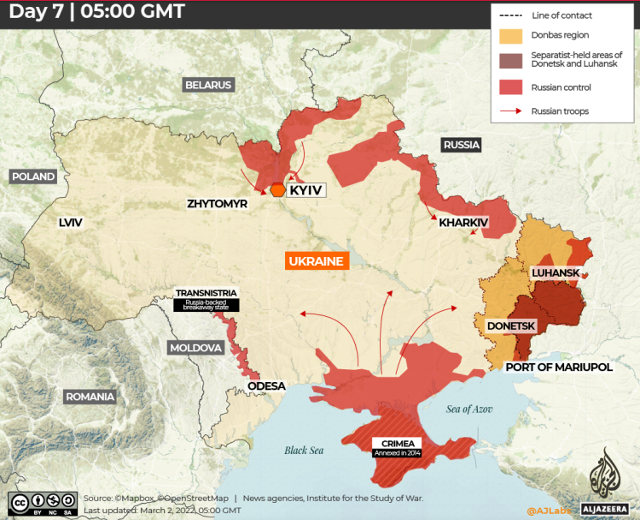
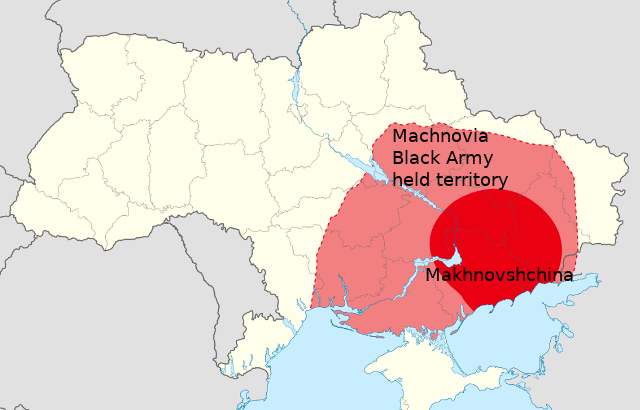
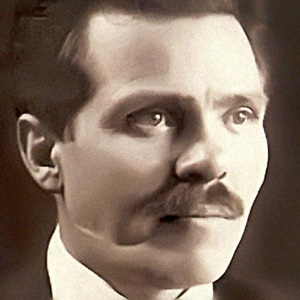
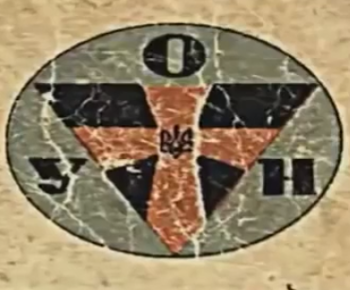
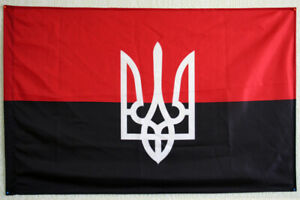

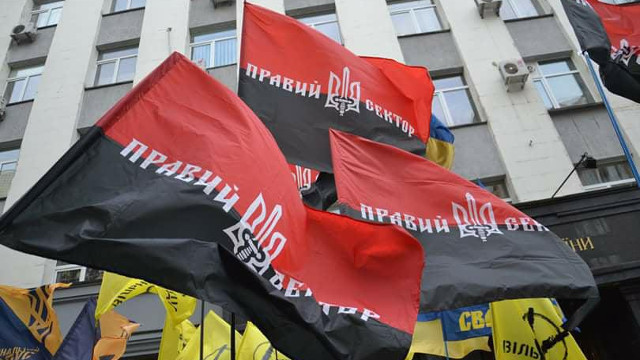

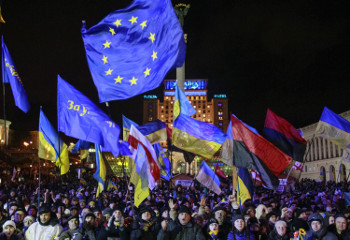
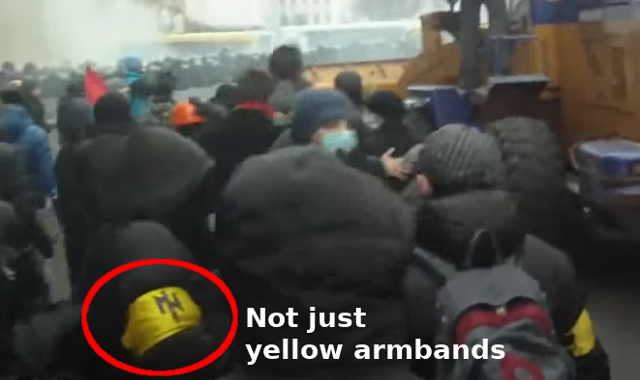
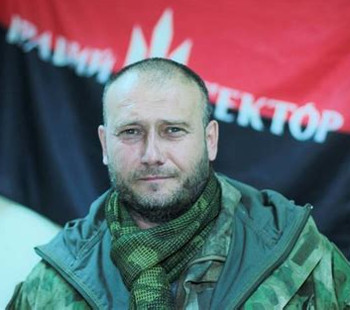
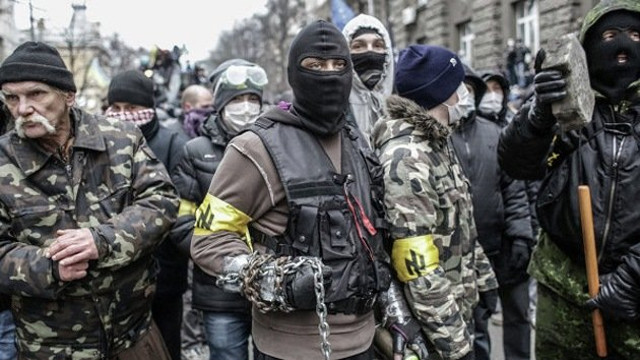
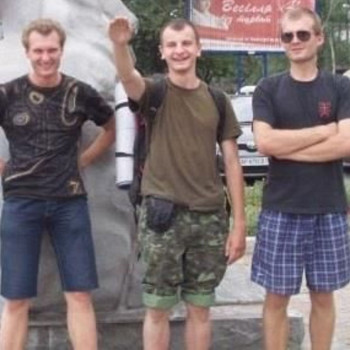

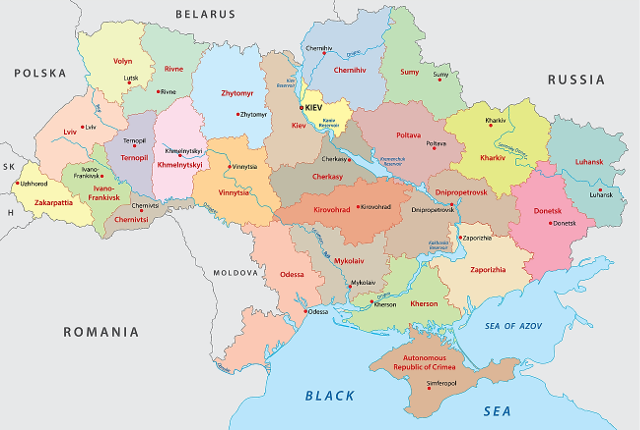
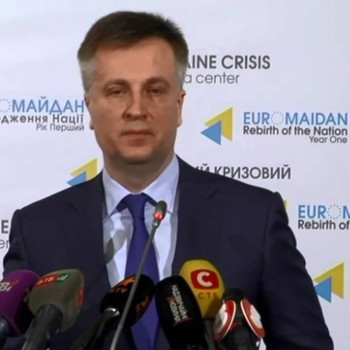
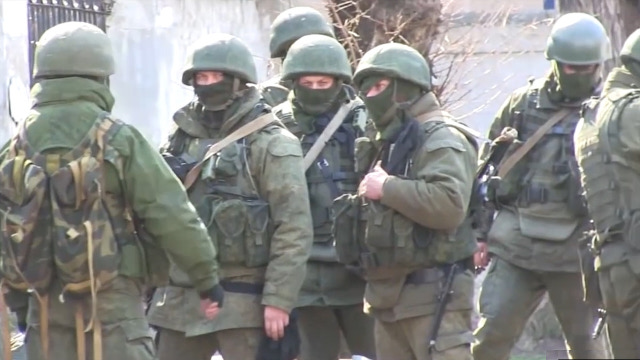
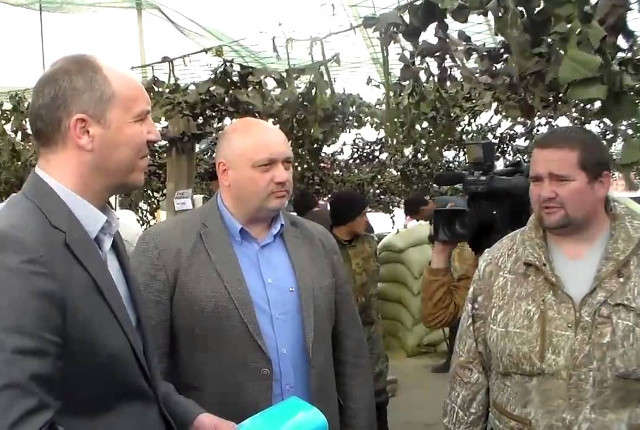
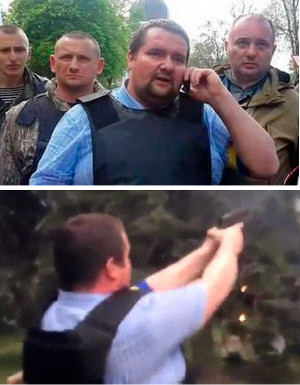
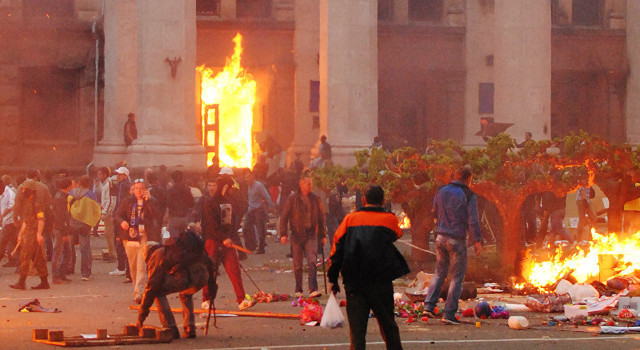



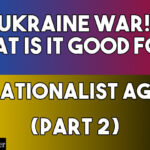
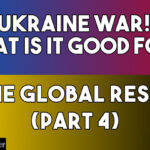

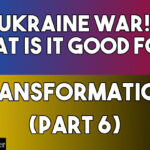
Your entire analysis is based as if another ‘cold war’ is happening, when in reality, it’s a historical fact that the ‘cold war’ was a gigantic illusion, C19-like style; Intellectuals like Gilbert Chesterton unmasked the ‘cold war’ fraud, saying the same elements [jewish bankers] are behind both capitalism and communism. International jewry in the 19th century planned to engineer 3 world wars necessary to establish a global dictatorship which they call a “universal republic”; 9/11 being a mossad job, initiated phase 3 of that old plan.
Plus governments are controlled either by the jewish bankers directly, or through their invisible weapon: freemasonry; nation’s leaders like Putin, Biden, Johnson, Macron, Trudeau, etc are only paid puppets obeying a script given to t hem by characters well above their heads.
What we are witnessing – apart from being theatre for public consumption – is the preparation of the right condition for in a very near future be able to unleash that 3 world war, because only when the world will be in total chaos, they will be able to present to the world their ‘messiah’.
Thanks Luis. I haven’t published my entire analysis yet. I agree Putin is as much a puppet of globalist forces as his western counterparts. I also agree that the cold war was ostensibly a profit making exercise for the military industrial complex and a control mechanism for the political establishment and their globalist masters in both the West and the East. I do not agree that this is evidence of some sort of “jewish plot.” I find the evidence cited by Antony C. Suttion to be convincing in this regard.
These engineered conflicts & events are used by the few to control the world population. Nations are not independent ‘lands’ but are corporations or ‘legal fictions’ under SEC maritime jurisdiction, search business listings on ‘Dun & Bradstreet’ using the phrase ‘Government of [enter country or agency].
Citizen[ship] ensures that the people fall under this same jurisdiction run by statutes & regulations, not Law.
Putin, Zelenskyy & all the other faux ‘leaders’ are puppets of this control system.
This article is well researched from an intellectual point of view but shines no light on the foundational problem faced by eight billion ‘persons’ [legal fictions].
I agree. In fact I would go further. Culture is a tool of oppresssion and the real problem, going back thousands of years, is that we collectively believe in the fiction of authority. Putin is another puppet of the control system. I hope you will find Part 2 interesting and possibly more to your liking. However it won’t discuss Cestui Que Vie trusts either. That’s not what it is about.
Hello Iain.
Awaiting the second part impatiently, but here’s already: masterful, as we have come to expect from you.
But above all I want to say: thanks for the link to “Z-Big’s” Grand Chessboard. Some time after 11/9/2001 I borrowed a translation from a German library. The English original was not available then, and the German one disappeared from the book market rather soon as well, back in the days. I believe it was after the first run sold out. This modern classic about the horrifying panorama became a curiosum in libraries. I hope it can stay up here for some time.
Many thanks Leo. Glad you found the sources useful. That is what it’s all about as we witness the ongoing virtual book-burning.
1 Having worked in various countries, I’m aware it probably never is as extensive as press claim. An area of conflict, radius 4 miles or so, everything normal throughout rest of country most likely.
Smoke-screen a diversionary tactic:
When press point off-shore, I look on-shore to see what Westminster’s up to.
2 ‘goodies and baddies’
I view ‘war’ as two bunches of badly brought-up kids squabbling.
It takes two to squabble.
My verdict always: 6 of one and half-a-dozen of the other.
3 ‘no way to accurately predict outcome’
Yes; which means cannot predict risk either.
Thus, potential or perhaps risks, rather than ‘risks.’
‘Risks’ slips towards prediction which closes minds to the unforeseen.
4 Many thanks for details of history further back than many commentators.
I’ve been vaguely aware history around Black Sea dates back further than even 1700s; what with more or less nomadic traders and traditional ‘tit-for-tat’ since Ancient Greek times, ‘mixed ethnicity’ probably an understatement.
Borders are lines that represent nothing real, just drawn on maps by politicians; if were real, couldn’t be moved backwards and forwards so incessantly as some are.
Earth being a sphere, life a continuum, there’s actually no such thing as either ‘The West’ or ‘The East’.
5 ‘larger geopolitical, economic, globalist’
Apart from despising ‘war’ and press, with apologies if premature I reckon it’s probably pre-arranged theatricals to incite fear, get ID ‘papers’, reduce population by a global bunch of overly-greedy, psychopathic, badly brought-up kids.
Every time my grand-father’s grand-children eyed-up last piece of cake on the plate he said: “All being well, someone’s going to be ‘ick.”
Thanks for the incitefil comment Jane. I hope Part 2 will interest you.
Hi Iain
Many thanks for posting my comment.
Ever since I found your articles in 2020, I’ve found them interesting and don’t doubt part 2 will be so too.
I wouldn’t read them, let alone comment if I didn’t think them good; one’s best friends are not always those who applaud without critique.
I didn’t wait for part 2 as emotions generally seem in need of a bit of calm.
Item 5 a challenge to myself to see how wrong I am in the light of part 2.
May I ask, should we look for part 2 in a month or so, or earlier?
Thanks Jane. I welcome thoughtful criticism such as yours. I offer my opinion based upon the evidence I am aware of and encourage all readers to do their own research and make up their own minds. Perhaps some of my articles will help (I hope so) but perhaps not. I do not imagine I am anywhere near to being infallible and I often make mistakes. I need thougtful readers, such as your good self, to highlight information I may not be aware of. Unfortunately I also have to moderate comments as many I receive are simply personal attacks and offer nothing of value to the conversation. I hope Part 2 will be out next week.
Incredibly thorough background history of Ukraine up to the present day. I did wonder why you hadnt posted anything befire now, but not surprising as researching and writing this must have taken ages, and I understand that you wouldn’t want to start hypothesising without all the data! 🙂 . Looking forward to reading your analysis of the current situation. There’s some very interesting thinking going on at Gold Goats ‘n Guns, Strategic Culture, The Saker, Eugyppius blog, and the RealSlog. 🙂
Thanks Olivia I’ll check out that thinking before I publish Part 2. It is always interesting to read other opinions.
I’ve just noticed that your historical account stopped short of the MH17 incident, which I have just today heard about, as anything other than an accidental or Russian affair anyway. I look forward to reading your account.
This is one of the apparently most thorough and well documented accounts that I found and argues that the US-NATO and Ukraine deliberately fired on the plane.
https://www.thelibertybeacon.com/shocking-update-on-the-mh17-cover-up/
Not sure I will cover this in Part 2 as it is already a long article. But thanks for the link. Very useful.
Just in case you haven’t already seen this 🙂
https://unlimitedhangout.com/2022/03/investigative-reports/ukraine-and-the-new-al-qaeda/
The Ukraine story seems to have many twists and turns and antagonists, contagonists and protagonists. And the global implications are huge. 🙁
Thanks Olivia. Highly recommended.
Iain, thanks for your hard work and thoroughly researched analysis. I am also a Christian as one of your previous commentators, but given your reasoning and use of words, I do not think the conversation that you offer allows for that which is spiritual. That is unfortunate.
🙂
I am telling you the truth, there is also a spiritual conversation when it comes to these events and the accurate fulfillment of biblical prophecy. But be it far from me to mix that which is natural with that which is spiritual.
Again, I am to render unto all their dues. Tribute to whom tribute is due. My hat goes off to you for the time you have spent researching and reading to put together an article like this one. Thanks also for your conversations with Whitney Webb and your contributions to the Unlimited Hangouts website.
Kudos.
Cheers.
Thanks Andy. I am not religious but I do appreciate the moral component which is something I will touch on in Part 2. However, you’re right, I am not well placed to comment on the spritual aspect although I agree that much of what we are seeing at the moment can be described as essentially a battle between good and evil.
Iain, just fyi here are some bitchute channels I put together since waking up in 2007 to the 9/11 scam, 2001 weaponized anthrax scam, USS Liberty scam and much more when I saw that censorship was growing. I share this all the time on fb and get many more positive responses than not. I’ve been trying to get anyone who can to help me improve any of it by correcting any of it for us. So far no one has been able to tell me that any of it is incorrect. I realize it will take a long time to go through this. Don’t forget to click “MORE” below each video to see the additional information.
Share WW I & II Truth for Peace
Click “MORE” below each video to see the additional information.
https://www.bitchute.com/channel/NBu3vOs8kXFY/
Note: If this bitchute channel is restricted to you like it is to some because of their location, use some VPN like https://www.privateinternetaccess.com/ to access the internet where you can change your location to one that works and you can view the channel.
Here are my other two bitchute channels:
TruthUp Channel
Click “MORE” below each video to see the additional information.
https://www.bitchute.com/channel/4HIt5FuN3qy5/
Truth Advocates for Justice and Peace
Click “MORE” below each video to see the additional information.
https://www.bitchute.com/channel/jod3DntbfdQf/
Many thanks Michael. Very useful.
Typo in brackets below. There are almost certainly others but I’ve caught one so far. Would be good to fix before the book (part 4).
“Forensic evidence and witness testimony presented at the subsequent trial showed [than] the slain were shot either from the side”
My view is that the West is being collapsed and the East is being risen, in a very obvious and coordinated way.
We in the West have been subject to Trotskyist sectarianism for many years now, the East not.
Yuri Bezmenov explains all.
Our technology went East, our military undermined with rubbish gear and rubbish ideology. Our financial system and economy plundered.
Even our food and energy security have been undermined by our own leaders.
We are being collapsed.
It’s that simple.
Thanks Robert. Yes. That is clear.
Loving the ‘Makhnovist Insurgent Black Army’ … Gots to gits me one o’ they! 😉
Ooh, me too.
Wow, your analysis is much needed as journalism today is just another arm of the State. You are doing very important work, but please be careful as you are in the firing line vis a vis David Kelly. Be safe and keep the narrative flying.
Thanks Robin. Will do.
Edward Curtin wrote a fascinating piece which explored, as it were, the covid operation from the point of view of a “deep psychology”:
https://off-guardian.org/2022/05/01/its-about-time/
The point which fascinated me was the observation that time has been speeding up over the neoliberal period in which everyone was constantly prompted to go faster and be sure not to be left behind. But then came covid which produced a jarring crash and sudden cessation of all movement in which everyone was mostly confined to the home. Thus we had this deep shock upsetting our basic perception and rendering us extremely vulnerable to a psychological reprogramming.
I can’t help feeling that the Ukraine matter has produced a similar deep shock: suddenly for the first time in two years there is an oppositional point of view. Consider: covid was a monolith. There was no opposition permitted across the media – not even in the “extreme” reaches. Indeed, the “extreme Left” (the Trotskyite World Socialist Website) suddenly dropped all their well-deserved suspicion of the media and the became most aggressive shillers for covid. In fact, the only way they could continue with their role as critic of the media was to insist the mainstream outlets were UNDER-reporting the death figures!
Anyone still floating around the goldfish bowl of this media may not even be aware of the critical voices speaking out against the covid restrictions, even (especially) amidst the scientific community. Similarly the total lack of any substantial critique against the vaccines has led to a situation in which a large number simply take these jabs for granted.
Ukraine has changed this such that the Left sites have seemingly regained their suspicions and can now behave like an actual opposition again, levelling understandable outrage at the viciously one-sided anti-Russian angle whilst conveniently forgetting the viciously one-sided angle previously delivered re: covid. Indeed, covid has mysteriously vanished for these sites.
And so we now enter a strange arena whereby the previous world of Left/Right has been reinstated. And, despite the war porn relentlessly pushed out of Ukraine, the feeling I am left with is of calm-before-the-storm.
Thanks George. The storm is coming. It’s food shortages, fuel crisis, winter of extreme discontent.
Ian!
You rely upon “Main Stream Media” for your analysis. Why not look to the left? For example, there is one interesting article on the background of Ukraine crisis, written by a former Swill intelligence officer, but published by a Trotskyist group in the USA. It is called “NATO Lies Exposed: Former Agent Speaks Out!”, https://socialistrevolution.org/nato-lies-exposed-former-agent-speaks-out/
I am not sure if you know Russian language, but if yes, I could point to more interesting articles. I feel it is necessary to know at least reading knowledge of a language of a country, if you’re serious about researching it (as you seem to be).
To understand the war in Ukraine, it is not enough to know the USSR history. It is also needed to include comparative approach, i.e. compare Soviet history to for example the Yugoslav history. Just like to understand the phenomena of revolution, it is needed to study not one revolution (e.g. Russian), but also other similar dynamical events (e.g. French revolution).
In case of the war in Ukraine, and war in former Yugoslavia, we’re dealing with similar kinds of war: a war of break up pseudo-socialist economies and societies.
You write about referendums about status of Crimea. However, this political turmoil has nothing to do with “democracy”. Rather, Ian should have outlined the power struggle that developed with the break up of the USSR for its resources. And hence all this game of “democracy”.
You write about how Yushchenko recognized S. Bandera as a “national hero”. What was needed to explain is the emergence of extreme nationalism, bordering on Nazism, in Ukraine. Please observe similar dialectic in the former Yugoslavia…(((
You write that most of the people in Ukraine support socialism. Hm… But so-called “socialist” and “communist” parties have nothing to do with the concept they supposedly represent…(( Just like the KPRF, the Communist party of Russia.
More comments will follow, as I re-read parts 2 ++ of your essay.
I do suggest that you include somewhere your email, as people may want to say something to you which they don’t want to be published. Your FB is not working…
Thanks Gennady. I don’t use FB, only Twitter. I have emailed you. I am familiar with Jacques Baud, his released documents and claims. I am aware that this conflict has nothing to do with democracy. I hope you find the rest of the series interesting.
Don’t be disillusioned. You are fantastically accurate, totally conscientious and more than reasonable! You are clarifying an unimaginable scale of wrong doing and misunderstanding.
Thanks Lisa.